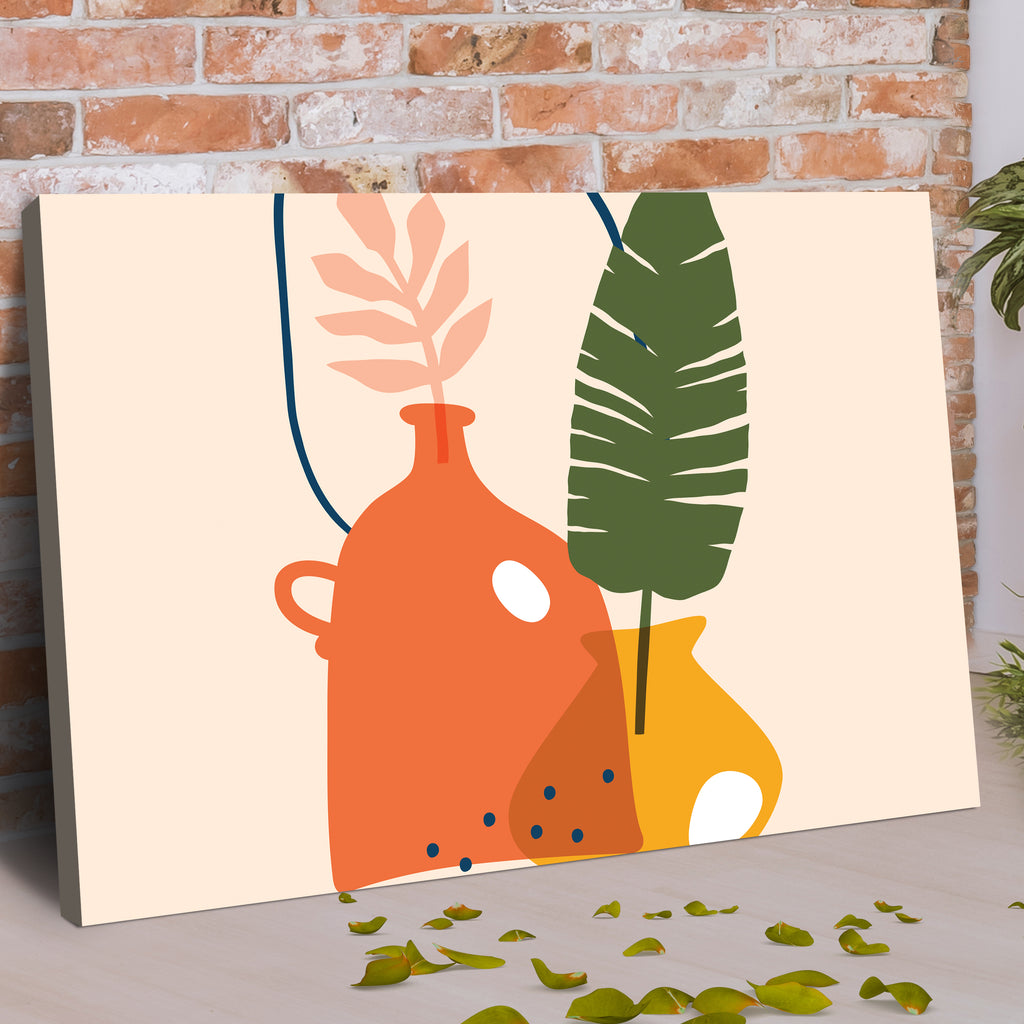Creating and collecting art is a passionate and fulfilling endeavor, but storing those beautiful art canvases can often be a challenging task. If you are an artist or an art enthusiast looking to keep your paintings and canvases in pristine condition, this guide is for you. We'll cover everything from choosing the right materials to the importance of temperature and humidity, incorporating wall art, wall decor, and personalized signs.
Understanding Your Canvas

Ice Cream Shop Sign | Customizable Canvas
Before diving into the storage methods, it's essential to understand the various types of canvases you might be dealing with, such as:
- Stretched Canvas: This is the traditional canvas that artists often paint on, stretched tightly over a wooden frame.
- Rolled Canvas: Sometimes, artists prefer to work on unstretched canvas, which can be stored in rolled form.
Understanding the nature of the canvas will guide you in selecting the appropriate storage methods.
Preparing Canvas for Storage
Cleaning
Before storing your art canvases, cleaning is crucial:
- Dust your canvas with a soft brush or lint-free cloth.
- Avoid using water or cleaning products that might damage the art.
Framing
For stretched canvases, framing provides additional protection. Choose frames that match your aesthetic preferences, whether it's a part of your wall decor or a professional collection.
Wrapping
Wrapping canvases in acid-free paper or clear plastic wrap protects them from dust, moisture, and accidental scratches.
Storing Your Canvases

Decor Elements Vase Blush Canvas Wall Art
Storing your canvases properly ensures that they remain in excellent condition for many years to come. Here's a detailed look at how to properly store both stretched and rolled canvases:
Storing Stretched Canvases
1. Vertical Storage: Storing stretched canvases vertically is akin to placing books on a shelf. However, unlike books, these canvases require special attention:
- Space Between Canvases: Ensure that there's enough space between each piece to prevent abrasion or the transfer of paint.
- Protective Padding: If the canvases are unframed, consider using acid-free paper or soft padding between them to further protect the surface.
- Secure Positioning: Make sure the canvases are secure and won’t tip over, employing shelf dividers if necessary.
2. Horizontal Stacking: An alternative to vertical storage is horizontal stacking. This method requires careful planning:
- Flat Surface: Choose a flat surface like a table or shelf dedicated solely to the canvases.
- Padding Between Canvases: Lay them flat with a soft material between each piece to prevent potential damage or sticking together.
- Avoid Weight on Top: Don't place heavy objects on top, as they might cause deformation over time.
Storing Rolled Canvases
Rolled canvases require different handling and are often used for transporting artwork or saving space:
- Sturdy Tube: Use a strong and rigid tube to store rolled canvases, providing protection against bending or folding.
- Painting Side Out: Ensure the painting side is facing outward when rolling to avoid any potential cracking or chipping of the paint.
- Labeling: Consider labeling the tubes, especially if you have multiple rolled canvases, to quickly identify them without needing to unroll.
- Climate Control: Like stretched canvases, rolled ones also benefit from being stored in a climate-controlled environment to prevent deterioration.
By following these specific techniques and precautions for both stretched and rolled canvases, you can preserve the beauty and value of your artwork, whether they are part of your private collection or intended for future exhibitions and sales.
The Importance of Climate Control

What A Difference A Day Makes Family Sign | Customizable Canvas
When storing art canvases, controlling the temperature and humidity is crucial:
- Temperature: Store your canvases in a cool and dry place, ideally between 60-75°F (15-24°C).
- Humidity: Keep the humidity level at 40-60% to prevent mold growth and canvas degradation.
Incorporating Wall Art and Decor
For those pieces you want to display, consider the following tips:
- Wall Art: Choose the appropriate hanging hardware to support the weight of the canvas.
- Wall Decor: Consider the aesthetics of the room and match your canvas with complementary decor elements.
- Personalized Signs: These can be an excellent addition to any room, enhancing the visual appeal and making the space uniquely yours.
Common Mistakes to Avoid
Overcrowding: Giving Enough Space for Each Canvas
Overcrowding is a prevalent mistake made when storing art canvases. By packing them too closely, you risk causing abrasion and other physical damages. Canvases rubbing against each other can lead to chipping of the paint, tearing of the canvas material, and the degradation of the overall quality. To prevent this, it's vital to give enough space for each canvas, whether storing them vertically or horizontally. Use padded separators or shelves to ensure they don't touch each other, preserving the integrity and appearance of the artwork.
Poor Climate Control: Importance of Proper Storage Environment
Storing canvases in areas with fluctuating temperature and humidity, such as basements or attics, can lead to severe issues like mold growth, canvas stretching, or paint cracking. Investing in climate-controlled storage or selecting a room with stable temperature (60-75°F or 15-24°C) and humidity levels (40-60%) can make a significant difference in maintaining the artwork's original condition. Using a humidifier or dehumidifier as needed can further help in controlling the environment.
Using Damaging Materials: The Need for Acid-Free Materials
The wrong storage materials can be as harmful as incorrect storage practices. Using papers, plastics, or containers that contain acids can lead to discoloration and degradation of the canvas over time. Always opt for acid-free materials like museum-quality storage boxes, acid-free paper for wrapping, and polyethylene covers. These materials are specifically designed for preserving art and will ensure that your canvases remain in pristine condition, free from any potential harm. By being aware of these common mistakes, you can take the necessary precautions to keep your treasured pieces safe and beautiful for years to come.
Conclusion
Storing art canvases is not just about putting them away. It's about preserving their beauty, integrity, and value for the long term. From understanding the type of canvas to selecting the right storage conditions and displaying techniques for wall art, wall decor, and personalized signs, each step requires care and consideration.
If you're interested in adding to your collection or finding unique pieces to fit your space, consider Tailored Canvases. With a selection of customizable wall art, decor, and signs, you can find the perfect piece to elevate your surroundings and make your living space truly your own.




